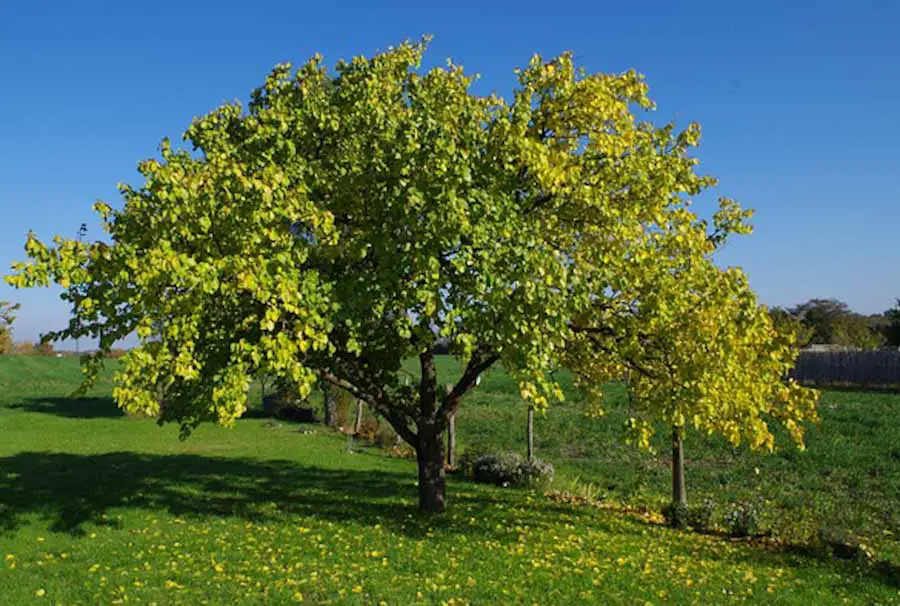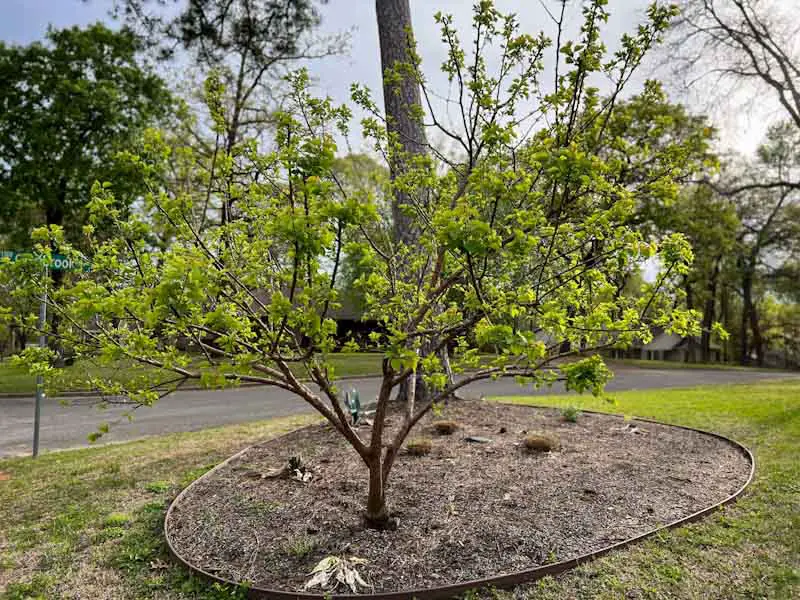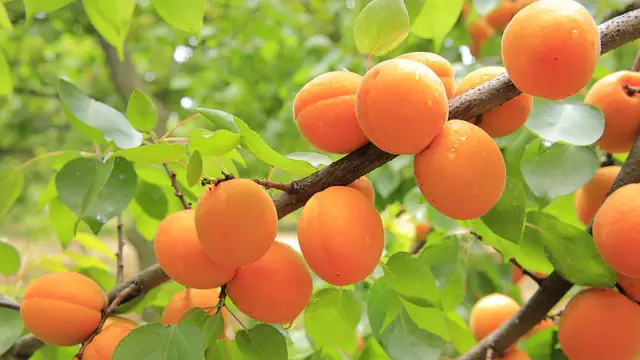
When my family moved across the country a few years ago, the first addition we made to our new home was planting an apricot tree. Apricots are not a common homegrown fruit in our area, but I couldn’t get the taste of just-picked apricots out of my mind after eating them all summer during our travels.
I’d seen huge, sprawling old apricot trees that were completely loaded with fruit all over northern New Mexico. It got me wondering – how long can an apricot tree live? Even more importantly – how long will it keep producing fruit?
Apricot trees can live for over 100 years in the right conditions, but most live for 15 to 40 years. They begin bearing fruit after about 3 years then continue for another 20-25, although some trees may continue fruiting longer. Apricots ripen between June and August, depending on the variety and climate.
Hopefully, my tree will give me fresh-picked apricots for decades. A lot of things can affect a tree’s longevity. Fruit trees in particular tend to be sensitive to environmental and cultural factors. Read on to learn more about the life of an apricot tree, its origin, and fruiting habits.
How Long Does an Apricot Tree Live?
There are a lot of factors that determine an apricot tree’s longevity. As a general rule, apricot trees live for up to 40 years, but most of their fruit production is in the first 20-25 years. However, in the right environment, apricot trees can live and produce much longer than that.

The Apricot Tree’s Origins
The common apricot (Prunus armeniaca) originated in central Asia and was cultivated there as early as 3000 BC. The fruit was later brought westward via the Silk Road, a system of trade routes that linked China to the Middle East and Europe. Apricots became known in ancient Greece in the first century, who believed its origins to be Armenia – hence the apricot’s botanical name (source).
The apricot has become integrated into many cultures. It signifies perseverance and resilience in Japan, beauty and fertility in China, and prosperity in Poland, among other things. The Romans dubbed it praecocia, which means “precocious one” – a reference to the fact that the apricot usually ripens early in summer.
Now the apricot is cultivated all over the world, particularly in the Middle East, the Mediterranean, and Asia. The largest producers of apricots are Turkey, Iran, and Uzbekistan, with the United States growing only about 1% of the world’s apricots (mostly in California).
Apricot trees are generally happiest in a semi-arid environment with well-drained soil and relatively mild winters, similar to its native region. In the right conditions, apricot trees have been known to live for more than 100 years.

In home gardens, apricot trees can survive for generations, often fruiting for 50 years or more. Apricots and their various hybrids (such as plumcots, apriums, and pluots) have become increasingly popular to grow at home. This is partly due to the fact that an apricot has the best taste and texture within a day of being picked.
What affects the lifespan of an apricot tree?
Apricots are no more difficult to grow than any other stone fruit…which can be tricky unless the conditions are ideal. The first step in having a long-lasting apricot tree is establishing good overall care. Cultural practices such as site selection, pruning, fertilizing, irrigation, and pest/disease prevention will help a tree live as long as possible.
Poor drainage is a big problem for apricot trees. Consider the apricot’s native areas – the soils tend to be relatively lean and very well-drained. Apricot trees are often planted on mounds or in raised garden beds in order to increase drainage. An apricot tree that sits in constantly moist soil will struggle to thrive.
Wet winter weather can also be problematic. Apricot trees are fairly cold-tolerant (they can be grown all the way into USDA zone 5). However, heavy winter moisture – combined with less sunlight during the winter – can keep the soil from drying out fully and cause the roots to rot quickly.
Frost is another cause of apricot tree damage. Many apricot varieties blossom in early- to mid-spring, leaving them susceptible to late spring frosts. If the frost damage is great enough, it may cause partial dieback of the tree. A dormant apricot tree can withstand very cold temperatures (as low as -20°F), but once it has awakened in spring, a harsh cold snap could be the end of the tree.

How long will an apricot tree bear fruit?
Apricot trees typically begin fruiting after about 3 years, although the early fruit may be small and less flavorful. Fruiting increases each year as the tree grows, typically continuing for 20-25 years. Depending on the apricot variety and location, apricots are harvested between June and August.
When do apricot trees begin producing fruit?
Young apricot trees need a few years to establish in the ground before they begin producing fruit. After 3 or 4 years, you may see a few small apricots on the tree – although, expect them to taste mediocre at best. The flavor and overall quality of the fruit will improve every year as the tree (and its root system) grows.
It may be 5-10 years before an apricot tree produces a really robust harvest. After 20 years or so, expect the size (and perhaps quality) of the harvest to decline slowly as the tree ages. However, some trees that are well cared for and ideally located may continue producing delicious apricots for 50 years or more.
Do apricot trees bear fruit every year?
Apricot trees can bear fruit every year, but may not, depending on the variety, climate, weather, and other conditions. Late frosts often kill buds and young fruit, preventing an apricot tree from fruiting that season. Choose a late-blooming apricot variety, such as ‘Golden sweet’ if you are worried about frost damage.

If the winter is unusually mild, an apricot tree may not receive enough chill hours to fruit that year. Most apricot trees need at least 700 chill hours to fruit, although there are some low-chill varieties available that only need 200-300.
Many apricot trees will over-produce fruit one year, then have a small (or nonexistent) harvest the next. This is called alternate bearing, and it can be prevented by thinning out the young fruits on the tree.
When the apricots are about the size of a dime, gently remove some fruit so that they are spread out every 6 inches or so along the branches. Thinning the fruits will allow the remaining fruit to grow bigger, and will cause the tree to grow a more consistent crop every year.
When are apricots ready to pick?
Apricots typically ripen between June and August, depending on the variety and climate. You know an apricot is ready to pick once it turns uniformly gold or orange and gives slightly when gently pressed. For the best flavor, eat or process apricots within a day of picking.
There’s a reason you don’t typically see apricots in stores – or if you do, they are mealy and dry. Apricots lose their flavor and texture very quickly once picked. One more reason to grow apricots in your home garden!

